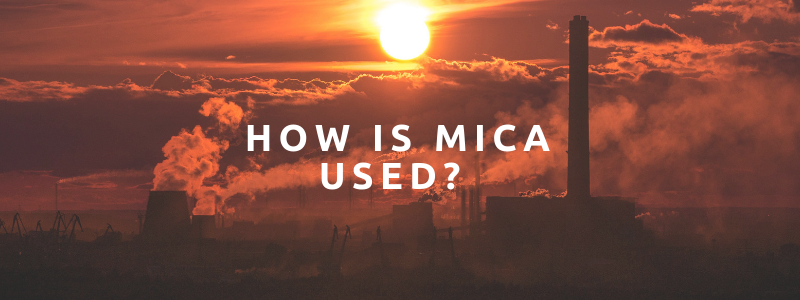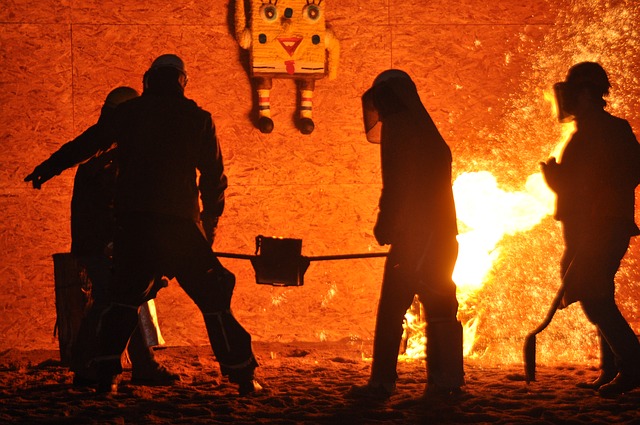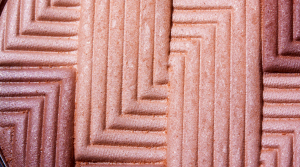
Because of its extraordinary properties, mica is used across a broad spectrum of industries. In its raw mineral form, mica is made up in such a way that it naturally cleaves into thin sheets.
Once processed, these sheets, whether rigid or flexible, form the basis for different products, supporting various industrial and manufacturing processes.
Therefore, when it comes to asking how mica is used, the answers are varied, reflecting the versatility of this mineral. It is associated with furnaces and foundries, but also power electronics, aviation, vehicles, the military, consumer appliances and even in beauty products.
How is Mica Used in Industry?
Industry, in this context, in fact covers many sectors. What is common to all is the requirement for some form of heat protection, thermal management or industrial insulation.
Mica is both lightweight and extremely resilient. It can withstand intense heat, and maintains its stability when exposed to electricity. It is durable in the face of extreme conditions.
Depending on the context, mica serves different needs and performs different functions. What follows is a summary of some of them.
How Is Mica Used In Foundries?
For foundry insulation and protection, mica has proved itself the ideal choice. This is because its technical properties make it an excellent lining material in furnaces. Mica’s superior slip pane qualities mean that it helps extend the lifespan of furnace linings, due to its flexibility of movement in extremely hot temperatures.

Furthermore, as a key element in microporous insulation sheets, mica aids both thermal management and furnace protection. Added to a mesh, this technology works as an early warning system when there is a risk of furnace damage.
Mica helps maintain furnace safety; it increases capacity and throughput; and it speeds up relining processes. Overall, it can make a significant difference to productivity in the foundry and steel industry.
Aerospace and Automotive Mica Applications
Both the aerospace and automotive industries use mica for various safety and performance-enhancing applications. Mica can act as a heat shield for aeroplanes and vehicles, and providing a flame-retardant barrier. It insulates sensitive, operational electronics and batteries.
The aviation industry uses mica to provide essential protection to black box flight recorders. Mica is used as fire-proofing for vehicle cabins and interiors, and in some road haulage containers.
How is Mica Used In Continuous Process Industries?

Safety and consistency are constant concerns for continuous process industries such as petrochemical, cement and glass production.
In the petrochemical industry, there are the combined pressures of reducing emissions while improving efficiency. Here, mica offers flexible solutions as a durable, adaptable lining for process pipes.
For kilns and furnaces concerned with cement and glass production, mica and microporous insulation help with temperature regulation and the control of energy consumption.
How is Mica Used in Consumer Appliances?
Mica’s sheer versatility means that it uses are not confined to industrial use. It also has widespread use in manufacturing, including various tooling and electronic applications.
However, it is perhaps most commonplace in everyday use as a key component in consumer appliances. Safety is non-negotiable when it comes to modern consumer goods, used widely in the home and elsewhere.
Appliances such as white goods, hairdryers, toasters, fan-assisted and convention heaters and microwave ovens must all meet stringent safety standards, to be acceptable as consumer items.
Mica’s low thermal conductivity means it can ensure the lowest possible loss of energy and improve the thermal profile of consumer appliances. With the focus of consumer appliances on performance and safety, mica can help ensure products remain competitive.
In appliances such as hairdryers and toasters, they produce heat by passing an electric current through a wire. For this heating element to operate safely, without risk to the body of the appliance, or to the person using it, it must have sufficient insulation.

This means winding the wire element, usually made of nichrome, around an insulating board. It is this board that is made of mica.
Mica also supports the dielectric heating process in microwave ovens. Mica sheets protect the appliance from the heat generated by a high frequency electromagnetic field, and prevents energy loss.
How is Mica Used in Fire Protection?
Mica has certain similarities with asbestos: both are rock-forming silicate materials, and both are fire-resistant. The crucial difference is that mica is safe and, unlike asbestos, will not pose a serious health hazard.
Consequently, mica is now increasingly used for fire protection in the form of strong but lightweight microporous insulation sheets.
One such use is in lining lift doors and fire doors as part of a building’s passive fire protection.
How is Mica Used in the Beauty Industry?
The beauty industry might seem a little out of place, when compared to industrial processes, manufacturing and appliances, but such is mica’s adaptability that it also has various uses in mineral makeup and cosmetics.

Cosmetics that contain natural minerals are known as mineral makeup. Mica is one of these minerals. There is an increasing demand across many product ranges and in different sectors for natural alternatives, and mica helps the beauty industry meet this demand.
Mica can protect the skin against the elements while allowing it to breathe, making it a useful substitute for more conventional foundation products. It also has anti-inflammatory properties and can help shield sensitive skin.
Mica also provides the main pigmented ingredient in all mineral-based makeup.
A broad range of makeup products can benefit from mica, including: concealers and foundation; eyeshadows and blushes; creams and sunscreens; and body powders and lotions.
The pearlescent qualities of mica make it well-suited to lipsticks, eye-shadows and blushes where they require a lustre resembling mother-of-pearl.
How Will You Use Mica?
Could your business benefit from mica? We have highlighted some of its many uses here, but as an extremely adaptable material, there will always be new, innovative products and processes able to benefit from its natural properties.
Discover more about mica, give us call on +44 20 8520 2248, or email sales@elmelin.com. Alternatively, you can complete our enquiry form and we’ll get back to you as soon as soon as possible.
